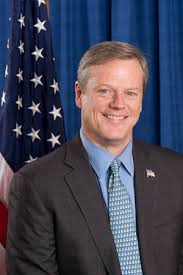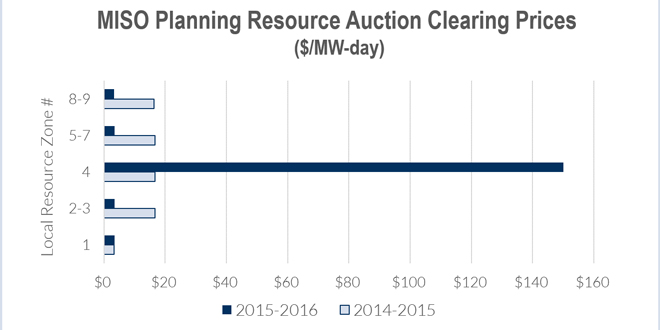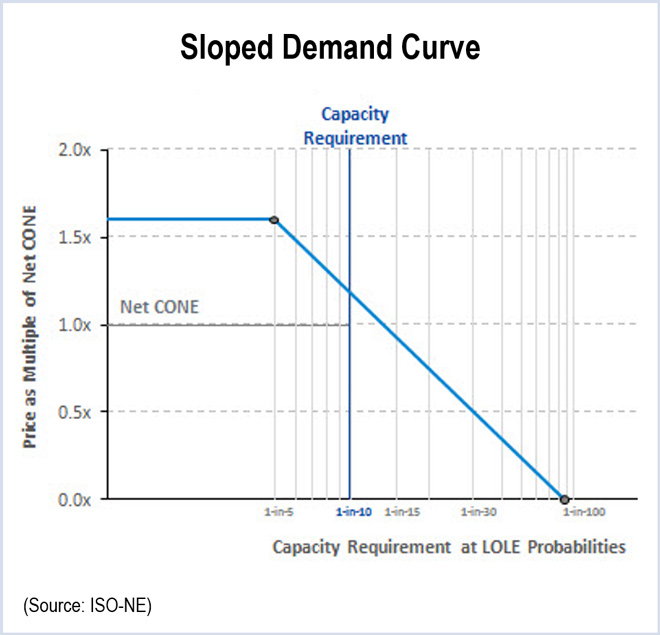New Law Shields Regulators’ Communications
The General Assembly has exempted from public review some communications among members of the Public Utilities Regulatory Authority.
The legislature approved a bill exempting communications that occur between scheduled meetings after the regulatory agency said its communications were hampered by requests citing the Freedom of Information Act. Comments in public meetings are not exempt.
The three commissioners said they decide “complex, legal and technical matters” and discussions at public meetings can take hours.
More: New Haven Register
Company Settles Marketing Complaint

The supplier will pay $100,000/month over the next 26 months to Operation Fuel, a nonprofit that provides home energy assistance to residents. The settlement resolves a two-year investigation by the Public Utilities Regulatory Authority. The company made no admission of wrongdoing under the terms of the settlement.
More: New Haven Register
ILLINOIS
Power Grid Upgrades Fail to Speed ComEd’s Restoration Times

ComEd’s restoration time averaged 196 minutes, according to its annual reliability report. The findings raised questions about the 2011 smart grid law, which allowed the utility to raise rates to finance a $2.6 billion grid modernization program over 10 years. ComEd also reported an average of just over one outage per customer last year, compared with 1.16 in 2012 and .99 in 2013.
Chief Operating Officer Terence Donnelly defended the utility’s performance, saying ComEd’s success in preventing outages has led to a longer average restoration time. “The outages that [occur cause] more significant damage and take longer to repair,” he said.
More: Crain’s Chicago Business
INDIANA
Pence to Obama: Nuts to Your CO2 Rule

Gov. Mike Pence has written to President Obama stating the coal-dependent state will not comply with the Clean Power Plan unless major revisions are made. Pence said the plan would force premature retirement of coal-fired plants, “threatening our stable source of affordable electricity.”
The state would have to curb carbon dioxide emissions by 20% by 2030 under the plan that the Environmental Protection Agency is set to finalize in August. The state’s power plants ranked No. 4 in the U.S. in 2012 for the amount of CO2 emitted per unit of electricity.
Pence has repeatedly stated that he isn’t convinced that climate change is mostly caused by human activity, and he vowed the state was ready to use all legal means necessary to fend off EPA’s plan.
More: The Indianapolis Star
IOWA
Opposition Growing to Bakken Pipeline Plan
Anti-pipeline groups submitted more than 2,500 written statements with the Utilities Board to protest the Dakota Access pipeline, which would deliver 570,000 barrels of North Dakota crude oil across the state to Illinois.
“This huge hazardous liquid pipeline is threatening our land, our water and our very livelihoods, if not lives,” said Brenda Brink, of the Iowa Citizens for Community Improvement. “There’s not enough money in the world that they can give us to cross our land, they’ll never do it,” said Dick Lamb, a landowner.
The pipeline proposed by Energy Transfer Partners would cross four states.
More: The Des Moines Register
MARYLAND
Brattle Report: Nuclear Plant Benefits State

The study estimated that without the Exelon-operated plant, Maryland’s carbon dioxide emissions would be about 9 million tons higher.
The industry-commissioned report comes at a time when some U.S. nuclear facilities – including several of Exelon’s units in Illinois – are facing potential shutdowns due to economic and policy challenges. In Illinois, Exelon has proposed legislation that would help shore up its underperforming plants. (See Exelon-Backed Bill Proposes Surcharge to Fund Illinois Nukes.)
More: Business Wire
MASSACHUSETTS
Bill Promotes Canadian Hydropower

Gov. Charlie Baker is supporting legislation that could help import up to 2,400 MW of Canadian hydropower into the state.
Matthew Beaton, Baker’s energy and environmental affairs secretary, said the state needs more electricity from renewable energy sources such as hydropower if it is to meet a 2020 deadline for reducing greenhouse gas emissions.
Baker’s bill would require major electric utilities to seek long-term contracts from hydropower generators — most likely Canadian companies such as Hydro-Quebec and Nalcor Energy.
More: Boston Globe
MISSISSIPPI
PSC Approves Construction of 2 Solar Facilities
The Public Service Commission on July 9 approved the construction of solar facilities near the Golden Triangle Industrial Park and at Golden Triangle Regional Airport in Lowndes County. The two facilities will cost nearly $3 million and generate a combined 1.6 MW.
The new solar sites are among several approved by the commission this year. “The momentum is really picking up in Mississippi on solar power,” Commissioner Brandon Presley said.
Silicon Ranch Investments and SR Walker East will build, operate and maintain the arrays.
More: Mississippi Public Service Commission
NEW HAMPSHIRE
Pipeline Approved by PUC Staff
State regulators are set to approve a plan to allow Liberty Utilities to secure 115,000 dekatherms of daily capacity on Kinder Morgan’s proposed natural gas pipeline from the Marcellus Shale formation in Pennsylvania into New England.
The staff of the Public Utilities Commission signed off on the utility’s request to use the Northeast Energy Direct project to serve its 90,000 customers. The three-member commission still has to formally approve the deal after a July 22 hearing.
Representatives of the Pipeline Awareness Network, an advocacy group, criticized the PUC’s staff for endorsing the project despite testimony of the PUC’s own expert witness and the agency’s consumer advocate that questioned the need for the utility to procure such a large amount of capacity.
More: New Hampshire Union Leader
NEW YORK
Residential DR Program Starts
Residential air conditioners can be turned down by remote control during times of peak demand under a limited, voluntary program that began July 1.
Participating customers will be paid small stipends to take part in the program and could save an estimated $100/year or more through lower electricity use during times when the AC is dialed down. For now, Rochester Gas & Electric is offering the program only to certain customers in two towns in Ontario County. RG&E’s sister company, New York State Electric and Gas, is offering its program in similar high-demand pockets in southern Erie, Chautauqua and Putnam counties.
New York regulators mandated the initiative as part of the overhaul of the state’s energy distribution system, known as Reforming the Energy Vision. The hope is that “dynamic load management” programs will relieve stress on the electric distribution system and help consumers learn to better manage their own energy use.
More: Democrat & Chronicle
HIKO Energy Settles Fraud Claims

The attorney general’s lawsuit accused HIKO of defrauding 25,000 current and former customers between June 1, 2011, and Oct. 1, 2014. An investigation by the Consumer Protection Bureau found that the company promised lower rates to customers and then charged higher rates, enrolled new customers without their knowledge and made it difficult for customers to cancel their enrollment.
The settlement requires HIKO to pay $1.25 million to the attorney general’s office to be used in a restitution program.
More: Buffalo News
Solar Capacity Quadruples in State
Solar energy capacity in the state quadrupled from 2011 to 2014, which officials say is a sign that solar power is becoming a more significant factor in meeting the state’s energy needs.
By the end of last year, state residents had installed enough solar energy-generating capacity to produce 314.5 MW. In April, solar power accounted for nearly 0.1% of the state’s electricity production, according to the U.S. Energy Information Administration.
The amount of electricity generated from solar energy tripled in Western New York over the last three years, thanks to a combination of lucrative government incentives and a steady decline in the cost of rooftop solar energy systems, according to a new report from the New York State Energy Research and Development Authority.
In addition to a 30% federal tax credit on new solar energy systems, the state is offering $1 billion in incentives for larger-scale solar projects through its NY-Sun initiative.
More: Buffalo News
State Awards Microgrid Grants

The winners include Central Hudson Gas & Electric and NRG Energy, which have partnered to evaluate the potential of a resilient microgrid at Stewart International Airport that would also benefit critical facilities in New Windsor. If the project study is approved, it may be eligible for up to $1 million for development of detailed designs and up to $7 million for construction.
More: Times Union; Central Hudson G&E
NORTH CAROLINA
Pork Producers Ask Lawmakers to Keep Renewable Mandate

The state’s utilities are asking, for the fourth year in a row, that the targets in the 2007 renewable energy law be postponed because no producers have been able to meet them. But some pork producers say they have already invested millions to develop manure management systems to capture methane from swine waste as an alternative to lagoon storage and field spraying. Smithfield Foods, the largest pork producer in the U.S., has spent $40 million developing projects at six of its hog farms.
“We don’t want to see anything about the law get changed,” Angie Maier, the N.C. Pork Council’s policy development director.
More: News & Observer
NORTH DAKOTA
PSC Sees ‘Continual Stream’ of Pipeline Applications

Commissioner Randy Christmann said the applications for infrastructure investment in the Bakken Shale oil-producing areas is a bullish sign for the oil-producing state, despite the slowdown in drilling. “It is going to make the next time it picks up … far more pleasant,” Christmann said.
The PSC approved a siting application for a new pipeline last week and set a September hearing for a new 23-mile crude pipeline by NST Express.
More: Bismarck Tribune
OHIO
Local Officials Appeal to Governor for More Control over Drilling
Some municipal and county officials have asked Gov. John Kasich to grant more control to local government over oil and gas drilling.
“The notion that our communities have the right to bar or limit activities which threaten public health or the quality of life of their residents has a long tradition in Ohio law,” the officials state in a letter to the governor, which was released by the anti-drilling group Environment Ohio. “… Yet the oil and gas industry has the audacity to insist that this basic principle of local control should not apply to its operations.”
More: Crain’s Cleveland Business
PENNSYLVANIA
Groups Accuses AG’s Office of Failing to Conduct Fracking Health Probe

The group said Attorney General Kathleen Kane’s office had done only “a few cursory interviews” instead of a full investigation. It has filed a right-to-know request seeking any documents relating to public health complaints and fracking.
A spokesman for the Democratic attorney general’s office said it attempted to look into the allegations but were stymied by the Health Department, which was controlled by a Republican administration until January. “Our environmental crimes unit did pursue this investigation and interviewed a significant number of the complainants,” a spokesman said. “But because the Department of Health under the last administration was not cooperative, it was difficult to determine how they responded.”
More: StateImpact
RHODE ISLAND
Regulators Eliminate Switching Fee
The Public Utilities Commission has eliminated a “billing adjustment” charge assessed on electricity customers who switch from incumbent utilities to competitive suppliers.
The billing adjustment charge, which was put in place in 2010, was designed to compensate utility National Grid for the difference in the fixed rate it charges consumers for electricity and the underlying variable rates it pays to power generators from month to month.
The commission said the charge caused confusion among customers and inhibited the growth of competitive retail electricity markets.
More: Providence Journal
SOUTH DAKOTA
Judge Grants Eminent Domain to Dakota Access Pipeline
A county judge granted eminent domain status to the Dakota Access crude oil pipeline, although the state Public Utilities Commission has not yet approved the project that would deliver North Dakota petroleum though the state.
The judge’s ruling will make it easier for surveyors to develop a route for the pipeline, which would run about 272 miles across the state. Dakota Access filed for the status in April, saying it was necessary for the surveyors to determine a suitable route for the pipeline.
Energy Transfer Partners is building the project, which would deliver 450,000 barrels of crude oil a day on a 1,134-mile route that terminates at a rail terminal and pipeline interconnection in Illinois.
More: Sioux Falls Argus Leader; Energy Transfer
VIRGINIA
Route Changes Filed for Atlantic Coast Pipeline

But Dominion has not altered the route through the western part of the state, where opposition to the project is strongest. “We’re still exploring new opportunities for routes, refinements and adjustments,” said Greg Parks, construction supervisor for the $5 billion, 550-mile pipeline project.
Dominion said that it is more difficult to co-locate the pipeline with existing utility corridors in the mountainous western region of the state.
More: Richmond Times-Dispatch
WISCONSIN
Lawmakers Try to Clear County Block of Enbridge Pipeline
Republican lawmakers have proposed to strip a county government of the authority to demand that a crude oil pipeline obtain more insurance.
The lawmakers added language to the state budget bill aimed at Dane County, which required a crude oil pipeline operator to boost its insurance coverage. That requirement has impeded completion of upgrades that Enbridge is installing on its Line 61 pipeline from Superior to Illinois. The upgrades would double the daily capacity of the 343-mile pipeline from 560,000 barrels to 1.2 million barrels. The language also allows the company to increase the pipeline’s capacity in the future, without requiring county approval.
Enbridge said the county exceeded its authority since federal agencies regulate interstate pipelines. Enbridge also said that it has always been responsible for the costs of cleanups. But environmental groups protested the language, noting that Enbridge has a history of pipeline spills in the state.






